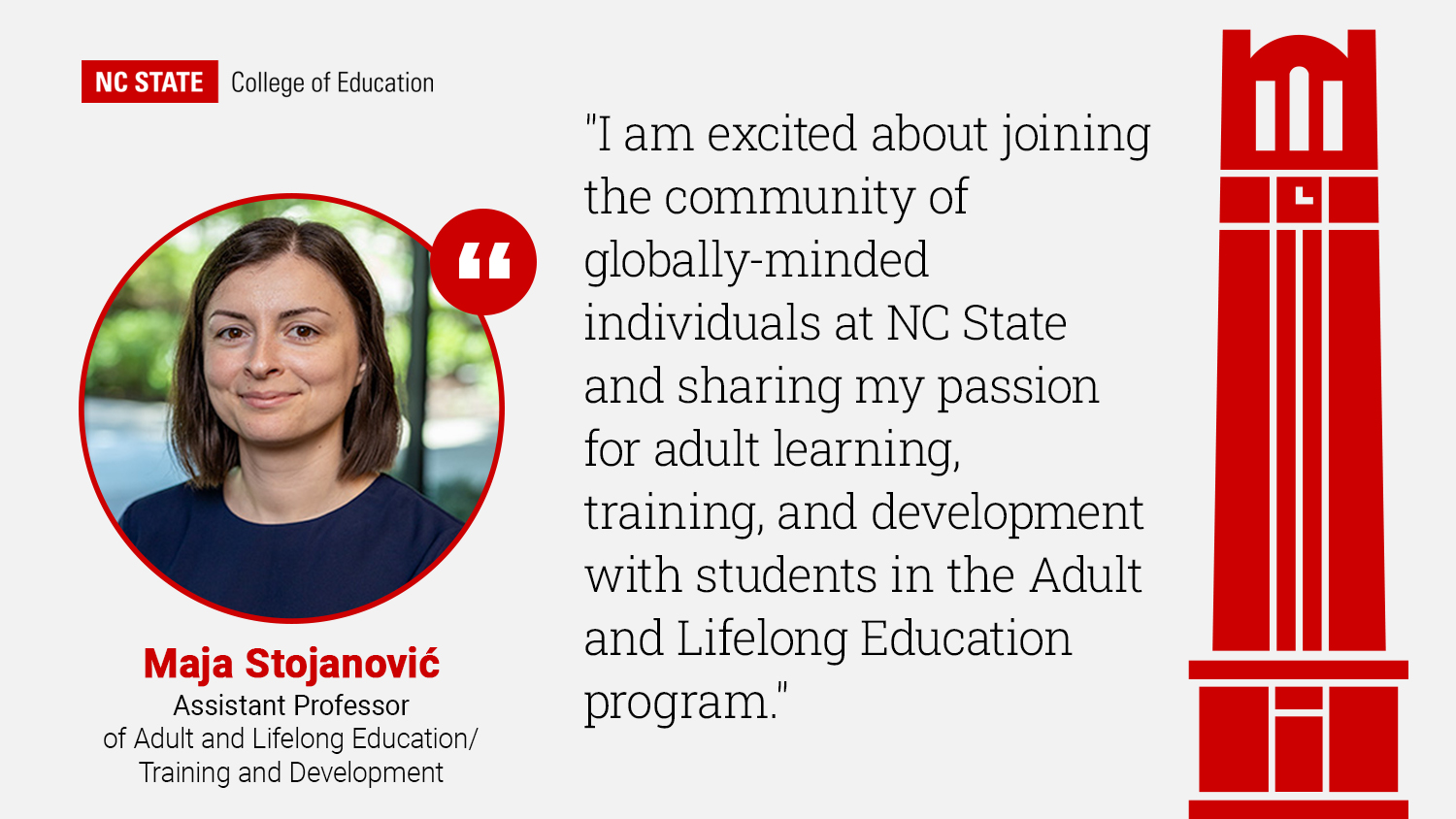New Book Co-Authored By Associate Professor Chad Hoggan Offers Advice for Supporting Students Through Transformational Learning in Community Colleges

The path to a college degree is different for everybody, but that path can be longer and more difficult for nontraditional and historically underserved students enrolled in community colleges.
Transformational Learning in Community Colleges: Charting a Course for Academic and Personal Success, co-authored by NC State College of Education Associate Professor Chad Hoggan, Ed.D., focuses on supports community colleges can implement for these students as they face challenges beyond academics.
“For some segments of students, the journey to a degree is much more difficult than for other students. It is incumbent on the community colleges to address why it is harder and what we can do to support them through challenges they have that other people don’t have,” Hoggan said.
Transformative learning theory focuses on experiences, often accompanied by a period of extreme mental and emotional difficulty, that dramatically change people and their lives.
Published by Harvard Education Press, the book details the social and emotional changes that nontraditional and historically underserved students face when they enter a community college. It argues that institutions will experience increases in student success if they pay closer attention to the transformative learning needs of those students.
The book focuses on a case study of the nonprofit Training Futures, a 25-week training program targeted to low-income adults that operates in partnership with Northern Virginia Community College to prepare graduates for entry-level jobs in fields like healthcare and administration.
Through the use of research and student testimonials, it outlines the struggles that participants faced — including critical self-assessment, imposter syndrome and isolation — as they moved into their new roles as community college students.
In addition to grappling with new academic material, many of the students faced other hurdles, including inexperience with academic terms and unfamiliarity with the social and cultural norms of higher education and business environments.
“It’s about acknowledging that we know you, as a student, need some support in getting over your pre-existing assumptions that you don’t belong here, that you’re not smart enough to be a college student, that bad decisions you’ve made in your life so far are indicative of what you’re going to continue to do in the future,” Hoggan said.
Drawing on 10 years of data from the Training Futures program, the book offers exercises that community college faculty and advisors can implement to help provide more holistic support for nontraditional and underserved students, as well as step-by-step advice for putting a support plan into action.
“These aren’t just flippant suggestions, these are things that were done and really seemed to work,” Hoggan said of the advice in the book. “It’s not difficult, it doesn’t take a lot of money, it doesn’t take a tremendous amount of time. It takes a little bit of a thoughtful approach and a willingness to do things differently.”
One of the book’s focal points is providing a space for students to support each other to help them feel as though a community college classroom is a place they belong. The book highlights how Training Futures had alumni visit to share their success stories and motivate students while current students would serve as tutors for classmates who were struggling with the material.
“That peer support is so important because they can relate to their peers more than they probably can to a professor,” Hoggan said. “Students need to feel like they belong, like they have friends, and when you take classes and there’s not a familiar face in there, it’s hard to get that sense of camaraderie.”
Hoggan acknowledges that it could be challenging for community colleges to utilize all of the suggestions given in the book amid limited resources. However, he argues that a focus on providing support for underserved and nontraditional students is important for institutions that want to change student outcomes.
Research cited in the book shows that African American students graduate community college at a rate that is half that of their white peers and only 27% of all students who come from families in the lowest income quartile earn a degree. Comparatively, a 2011 Aspen Institute study cited in the book found that Training Futures had a 94% completion rate and an 84% rate of graduate employment in jobs related to their training.
“We see more and more of the student demographic becoming students of color and students from backgrounds of poverty, and if they continue to have low completion rates, the community college model won’t work,” Hoggan said.
Three Takeaways from Hoggan’s Book
- Use support and positive feedback to guide students through the tumultuous aspects of transformational learning: “If students are prompted and encouraged to envision themselves as succeeding, they will be more likely to engage in behaviors that lead to that success; and the more they engage in appropriate behaviors for their new social role, the more likely it is that their sense of identity will expand to include these new roles.”
- Help students reintegrate from school to the workforce through immersive environments: “There is a big difference between learning course material, especially as traditionally taught in a college classroom, and becoming a professional. In order to accomplish the latter, students must at some point, step out of their comfort zones and into their new roles.”
- Guide students as they explore the path ahead of them: “The objective for community college is to ensure that students have the opportunity to develop new possible selves from possibilities they have not considered as well as to develop realistic plans for achieving those versions of themselves.”
- Categories:


